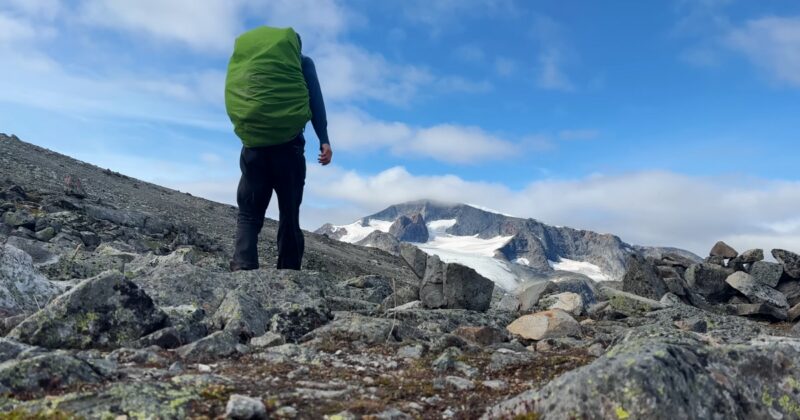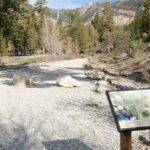Achilles tendonitis is a painful condition that happens when your Achilles tendon is inflamed. You can experience symptoms like stiffness and swelling, as well as a hard time walking and doing all your daily tasks. As a result, the back of your heel and lower leg may hurt for days.
This condition is pretty common in athletes who are into heavy exercising, running, hiking, playing basketball and tennis, or any activity that requires pushing off on the toes. Dealing with Achilles tendonitis is an ongoing challenge. If it makes you feel better, even healthcare workers can suffer from such conditions.
That’s why the professionals from onlinedegrees.rockhurst.edu train their students to help hikers and other athletes deal with Achilles tendonitis. These are some things you need to know based on their knowledge:
Early Diagnosis is Essential
If you’re an active individual who often runs, walks, or hikes, you’re already at risk of developing Achilles tendonitis. But how to recognize it? It’s a specific and unusual pain in the Achilles tendons, like it’s pulling your foot up, limiting its flexibility.
If you recognize that pain, make sure you visit your doctor so you can prevent inflammation, as it may get worse the longer you wait. Early diagnosis can help treat the condition better so you can get back to your favorite activities, especially hiking.
How Common is Achilles Tendonitis in Hikers?
As we said, it’s a common injury among active individuals who practice intense activities. As hiking is part of those activities, we can say that Achilles tendonitis is pretty common among them.
Usually, several changes in hiking habits may cause the condition, as well as prolonged exposure to elevations and challenging trails. Here are some factors to know:
- Sudden increase in intensity – New hikers, and experienced ones too, should know that they need to increase the distance and difficulty gradually, not suddenly.
- Challenging terrains – Hiking uphill and downhill on uneven trails causes stress on the Achilles tendon, leading to risks of inflammation
- Improper shoes – Wearing shoes that don’t provide enough support while hiking can surely be one of the causes of pain and Achilles tendonitis.
So, if you see swelling and stiffness and feel excessive pain in the tendon, it’s important to immediately ask for help. Early intervention can help prevent the condition from worsening and allow you to get back on the trails sooner.
How Hikers Can Prevent Achilles Tendonitis?
Some of the most common tips for Achilles tendonitis prevention is starting slow on lesser challenging trails while gradually increasing the hiking intensity. Still, these additional tips may help too:
- Strength training – Make sure you exercise between hiking sessions so you can strengthen the calves and lower legs, reducing the stress on the tendon.
- Flexibility exercises – Stretching exercises can help your muscles to be ready for sudden movement changes and even tiny injuries. Consider stretching before going on a hike to warm up the muscles.
- Supportive footwear – Proper footwear supports the ankles while providing cushioning on the whole foot, especially when hiking challenging trails.
- Additional insoles – If your shoes don’t provide enough support and cushioning, additional supportive insoles can improve the situation, as they’re an inexpensive way to prevent Achilles tendonitis.
- Listening to your body is a very important aspect that we often ignore. When the body is tired, we should rest and recover, not push through the pain. Remember, trying too hard seems like a good idea, but may worsen the condition and slow down the muscle and tendon rebuild.
- Warm up before hikes – Perform light exercising and dynamic stretches before you hit the trail to lower the risk of hiking-related injuries, including Achilles tendonitis.
How Hikers Can Stop Achilles Tendonitis?
Once it happens, it requires medical attention and prolonged resting. If you feel swelling and pain in the Achilles tendon, you must seek professional medical advice immediately. That way, you’re increasing the chances of getting well with no risk of staying in bed for months.
Surely, you will have to rest and reduce all activities until you heal, especially hiking. We know it’s challenging to do that, but we suggest temporarily swapping it with light walks, swimming, or short-distance cycling.
Here are some additional tips on stopping Achilles tendonitis in hikers:
- Use a walking boot – Once you’re ready for light hikes, we suggest you wear a walking boot to immobilize the ankle and let the tendon heal.
- Practice therapy – Your doctor may suggest you practice the rest-ice-compression-elevation therapy. That means you apply ice packs three times a day, avoiding direct skin contact. You elevate the heel when resting, and when needed, you use compression to immobilize the foot.
- Physical therapy – In some cases, you’ll have to visit a physical therapist to get a specific strengthening program. As a result, you increase the blood flow to the area while healing and preventing future injuries.
- Massages – During the healing process, you may need self-massage or even professional. Use foam rollers at home to improve flexibility, but don’t overdo it.
- Invest in supportive footwear – Once you face such an injury, it’s time to invest in quality footwear that provides enough ankle support and cushioning and then think about returning to hiking.
In extreme cases, Achilles tendonitis may prevent the hikers from future hiking activities. Even though we hope it’s not the case with you, you must be prepared for such an outcome. But don’t worry – the battle is not lost. With ongoing care, exercising, and relaxation therapies, you may be able to try again in a few months but on less challenging trials.
Conclusion
Remember, healing and stopping Achilles tendonitis takes time, even longer than you can imagine. The severity of the condition depends on many factors, like age, the nature of the injury, and additional factors, like footwear, trail elevation, and terrain.
At this point, you only have to follow the doctor’s instructions and make sure you don’t do anything that may prolong the healing period.
Hello, my name is Harper Barton. The only thing I love more than travelling is writing about it. Sounds strange doesn’t it? But yeah, I adore writing and sharing my experiences about what I have experienced during my travels. Since I am a person who loves being a part of the community, I often write about local festivals with the goal of popularizing outside just small communities they come from.







